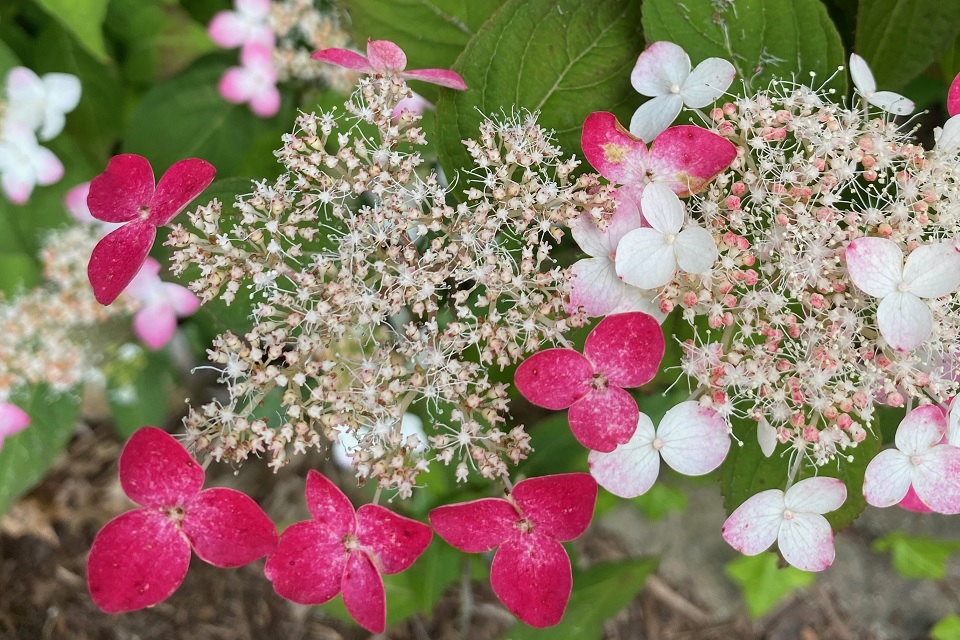
UT Gardens’ June 2020 Plant of the Month
Submitted by Andy Pulte, University of Tennessee Department of Plant Sciences
The mountain hydrangea (Hydrangea serrata) has always been relegated to playing second fiddle behind the more popular and lauded mophead hydrangea (Hydrangea macrophylla). However, over the last several years at the State Botanical Gardens of Tennessee (particularly at the UT Gardens, Knoxville), we have simply fallen in love with this understated beauty. And why not? There is a lot to love about this seldom featured hydrangea species.
A recent stop at a local big box store revealed a large selection of the aforementioned Hydrangea macrophylla, but no Hydrangea serrata werein sight. So, you may need to seek this plant out online or at an independent garden center. This will give you access to some of the best cultivars available. Look for cultivars including ‘Beni-Gaku,’ ‘Blue Billow,’ ‘Purple Tears,’ ‘Blue Deckle’ and the H. serrata series Tuff Stuff™.
Hydrangea serrata is native to Japan and Korea and tends to be a stockier plant then H. macrophylla. It loves a morning sun/afternoon shade spot in your garden and will reward the adequate application of moisture with bountiful blooms. In fact, you can sneak this plant into even sunnier spots if soils remain moist.
As a general rule, you don’t grow hydrangeas for the foliage. Flower power is the main appeal. Mountain hydrangea will not disappoint. In early June, flowers will cover plants from top to bottom. Most notable cultivars are “lacecap” types. Lacecap hydrangeas have open centers containing fertile flowers. This is a real positive trait, as lacecaps tend to attract more pollinators.
You will find mountain hydrangeas at all three UT Garden locations across the state. The gardens in Crossville, which traditionally have more challenges with hydrangeas, report H. serrata is a more consistent bloomer for their location than H. macrophylla. With a few exceptions, H. serrata blooms on old wood and needs very little pruning. Some newer cultivars have the ability to bloom on both the last and current season’s growth.
If mountain hydrangea is new to you, it might be worth a try this year. Planning now and planting in early fall would be ideal if you wish to add one to your garden. This hydrangea is sure to bring years of beautiful blooms to your garden.
The UT Gardens includes plant collections located in Knoxville, Crossville and Jackson. Designated as the official botanical garden for the State of Tennessee, the collections are part of the UT Institute of Agriculture. The Gardens’ mission is to foster appreciation, education and stewardship of plants through garden displays, educational programs and research trials. The Gardens are open during all seasons and free to the public. For more information, see the Gardens website: utia.tennessee.edu/state-botanical-garden.
###